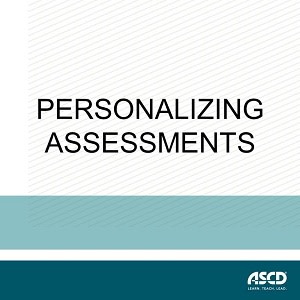We already know about best practices in assessment. We know that we should use formative assessment to look for patterns in errors and adjust instruction. We also know that we need to have clear learning targets to assess, and that these assessments can be common. We know a lot. One area we don’t yet know as much about is how time factors into assessment.
Time is always an issue for educators. We never have enough, and we often feel we must rush through the material. Great educators try not to let time get in the way of good instruction. But even then, time can get in the way of better use of assessment. We use some sort of formative assessment exercise to check for understanding at the end of the day’s lesson; we give end-of-unit assessments; and our districts and states often take a specific week to give an end-of-course exam or grade-level assessment. What’s interesting here is that time is still the inflexible piece.
Why do we always assess students at the same time and let that be the governing factor for student achievement? We know that students each learn at their own pace. Some take longer; some take a shorter amount of time. We have the same high expectations for our students, but we also know students take different amounts of time to get to those high expectations. One critical element of personalization is that time is no longer the driving factor. Instead of relying on the Carnegie unit, students show mastery and are assessed when they are ready. Granted, so many outside forces are demanding our time, but how might we move past them to meet students were they are in the assessment process?
Create Rigorous Competencies
To start being more flexible with when to give assessments, you need to begin with the end in mind. Many schools that have become more flexible with when they give critical summative assessments create rigorous competencies from standards, including the Common Core. Douglas Fisher and Nancy Frey also advocate for this:
“Grade-level teams or departments usually specify course competencies and corresponding assignments. Competencies should reflect the state standards while offering students an array of ways to demonstrate mastery, not just paper-and-pencil tasks. The competency assessments should be numerous enough that students can adequately gauge their own progress at attaining competencies; generally 7 to 10 per academic year is best” (2009, p. 24).
Competencies are built from standards and include measurable and transferable learning objectives. When designing a competency, you keep both academic and 21st century skills in mind so that the competency moves toward applied learning of multiple learning objectives. When you cluster standards and objectives like this, you can be more comfortable designing flexible assessments to meet these synthesized objectives.
Be Flexible When You Summatively Assess
It is perfectly appropriate to formatively assess the whole class after giving a lesson, and often educators formatively assess students individually. Through the formative assessment process, we can differentiate, give feedback, and meet the needs of students. When we formatively assess, we know when students are ready or not ready for the next steps. This is where time often gets in the way of good intention. If students are not ready for the summative assessment, why should we make them do it? It may be appropriate to allow some students to take the summative assessment after other students have taken it. Again, this should be a rigorous performance assessment that demands construction and application of knowledge. Summative assessments should only been given when students are ready, and, therefore, we must personalize when we give them.
Allow for Late Work
This is probably one of the most challenging shifts for veteran teachers. On the one hand, we want to foster good work ethic, which means adhering to deadlines; on the other hand, we want to be flexible to meet the needs of all students. The key here is to know what are you are assessing. Are you assessing work ethic or content? Students should never be punished for not learning content in a specific amount of time, hence allowing work to be late. Some educators find it appropriate to assess the 21st century skill of work ethic, but they in turn do not let that affect their content learning grade. Once you allow for late work, you can have students complete assessments, mostly summative, at various times.
The movement toward flexible time for assessment is obviously challenging, but these steps can make the shift more manageable—even in the face of immovable educational demands on our time. If we begin with the end in mind when designing assessments, we can use personalization to keep time as a malleable component to meet the needs of all students. This is a move toward true personalization of assessment.
Reference
Fisher, D. & Frey, N. (2009, November). Feed up, back, forward. Educational Leadership, 67(3), 20–25.
Learn more about formative assessment through the Common Core Institute Using Formative Assessment to Meet the Demands of the Common Core.








